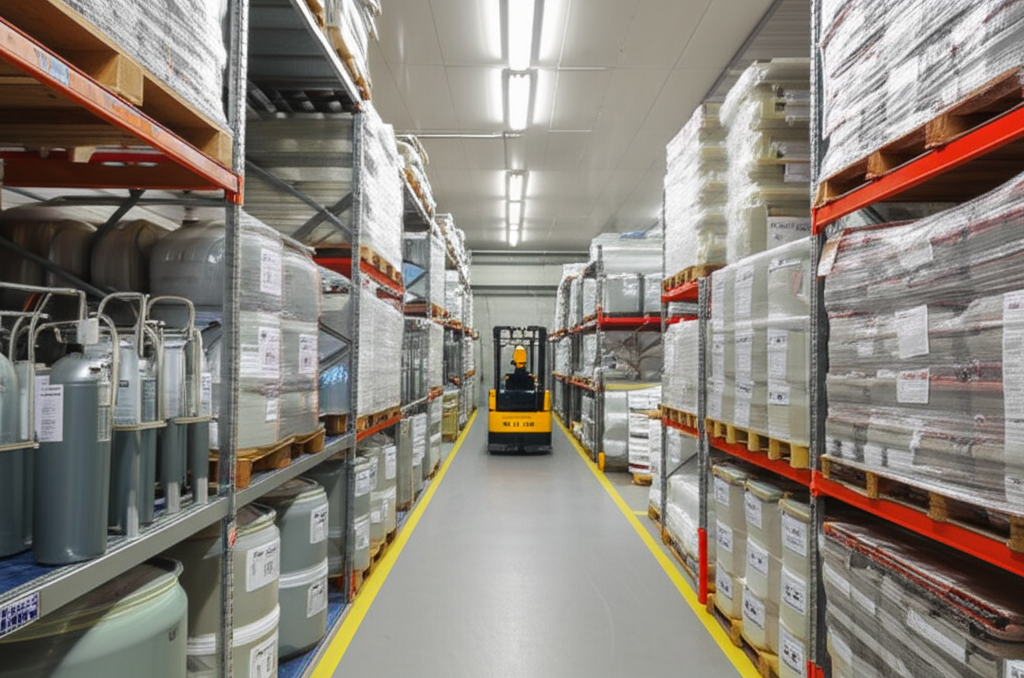Understanding Beta-D-Ribofuranose 1,2,3,5-Tetraacetate (CAS 13035-61-5)
Beta-D-Ribofuranose 1,2,3,5-Tetraacetate, also widely recognized as Tetraacetylribofuranose or Tetraacetylribose, is a crystalline carbohydrate derivative of significant importance in the chemical and pharmaceutical industries. Identified by its Chemical Abstracts Service (CAS) registry number 13035-61-5, this compound serves primarily as a vital intermediate in the synthesis of nucleoside analogues. Its molecular formula is C13H18O9, resulting in a molecular weight of 318.28. The compound typically appears as a white to off-white powder, denoting a high level of purity essential for its downstream applications.
Key Physical and Chemical Properties

Detailed characterization of Beta-D-Ribofuranose 1,2,3,5-Tetraacetate reveals several critical properties that dictate its handling, storage, and application. The melting point is reliably found between 81-83°C, indicating its solid nature at room temperature. While a precise boiling point is difficult to ascertain without decomposition, estimates place it around 417.45°C. Its density is approximately 1.4171. The specific rotation is around -15.4º (c=7, MeOH) or -14.5° (C=5, MeOH), a crucial parameter for verifying its specific isomeric form and purity. Solubility is observed to be sparing in chloroform and slight in methanol, necessitating careful consideration of solvent choice during synthesis and processing. For long-term stability, Beta-D-Ribofuranose 1,2,3,5-Tetraacetate should be stored under an inert atmosphere at room temperature, in a cool and dry place, sealed to avoid moisture and light degradation. This careful storage regimen ensures the integrity and purity of the material over its shelf life, typically 2 years when stored properly.
Applications in Pharmaceutical Synthesis
The primary and most significant application of Beta-D-Ribofuranose 1,2,3,5-Tetraacetate lies within the pharmaceutical sector. It is recognized as a key pharmaceutical raw material and a crucial building block for the synthesis of various nucleoside compounds. Nucleosides and their phosphorylated derivatives, nucleotides, are fundamental components of DNA and RNA. Synthetic nucleoside analogs are widely used as therapeutic agents, particularly in antiviral and anticancer treatments, due to their ability to interfere with viral replication or cancer cell growth by mimicking or blocking natural nucleosides.
One of the most prominent uses of Tetraacetylribose is as an essential intermediate in the production of the broad-spectrum antiviral drug Ribavirin. Ribavirin is used to treat a range of viral infections, including Hepatitis C virus (HCV) and Respiratory Syncytial Virus (RSV). The synthesis of Ribavirin involves coupling a specific heterocyclic base with a modified ribose sugar moiety, which is often derived from or constructed using Beta-D-Ribofuranose 1,2,3,5-Tetraacetate as a key starting material or intermediate. Its acetyl protecting groups on the hydroxyl positions are strategic for selective chemical reactions during the synthesis process, allowing for controlled functionalization of the sugar ring before deprotection to yield the final nucleoside structure.
Beyond Ribavirin, this compound is also utilized in the synthesis of other nucleoside-based therapeutics and research chemicals. Its versatility stems from the reactive hydroxyl groups, selectively protected as acetates, which can be manipulated to build complex molecular structures required for drug development. The high purity grade, often exceeding 98%, is critical for pharmaceutical applications to ensure consistent reaction yields and minimize impurities in the final active pharmaceutical ingredients (APIs).
Quality and Purity Standards
Given its use in pharmaceutical manufacturing, Beta-D-Ribofuranose 1,2,3,5-Tetraacetate is produced and supplied adhering to stringent quality standards. Specifications often align with pharmacopoeial requirements such as CP (Chinese Pharmacopoeia), USP (United States Pharmacopeia), and EP (European Pharmacopoeia), where applicable, or meet specific high-purity industrial standards. Certificates of Analysis (CoA) and Material Safety Data Sheets (MSDS) are standard documentation provided, detailing batch-specific purity, physical properties, and safety information. Quality control measures involve analytical techniques such as High-Performance Liquid Chromatography (HPLC) to verify purity levels, melting point determination, and spectroscopic methods to confirm structural identity.
Packaging typically involves materials designed to protect the powder from moisture and light, such as sealed bags within drums, commonly available in net weights like 25kg. This packaging ensures the product remains stable during transport and storage, maintaining its high purity until use.
Availability and Sourcing
For pharmaceutical companies and research institutions requiring high-quality Beta-D-Ribofuranose 1,2,3,5-Tetraacetate (CAS 13035-61-5), sourcing from a reliable manufacturer is paramount. As a key intermediate, consistent supply, purity, and documentation are essential for maintaining production schedules and regulatory compliance. Discussions regarding supply chain options, including bulk quantities and lead times, are standard in procurement processes. Companies looking to purchase this vital pharmaceutical intermediate would typically engage with potential suppliers to discuss specific purity requirements, packaging needs, and logistics. Inquiries about the product's price are common, often varying based on order volume and purity specifications. Finding a reputable manufacturer and supplier capable of providing material that meets stringent pharmaceutical standards is crucial for the successful synthesis of antiviral drugs and other nucleoside-based therapeutics. Potential buyers can inquire about the current price and availability, often starting with a request for quotation or sample to evaluate suitability for their specific synthetic processes. The global market for pharmaceutical intermediates like Tetraacetylribose involves careful selection of partners capable of ensuring both product quality and supply reliability, facilitating the consistent production of essential medicines.
Manufacturing Facilities






Professional Export Experience
to Global Customers

1. 20 years of R&D, manufacturing and sales experience, serving customers in 60 countries and regions around the world;
2. Own R&D laboratory, pilot platform and large-scale production workshop, which can meet the audit requirements of global customers;
3. We can satisfy customers' perfect transition from small scale lab requirements (gram level) to commercialization requirements (hundred tons level).
A: We don't have Minimum Order Quantity, exact quantity should be provided before quotation for us to calculate the exact cost.
A: We don't provide free samples due to lots of request and expensive international courier's cost, we can deduct the sample charge after commercial order placed.
A: Our payment terms: Small or sample order: T/T IN ADVANCE. Commercial order: First order should be by T/T IN ADVANCE or L/C at sight, and following orders T/T 30~90days is acceptable subject to approval of credit application.